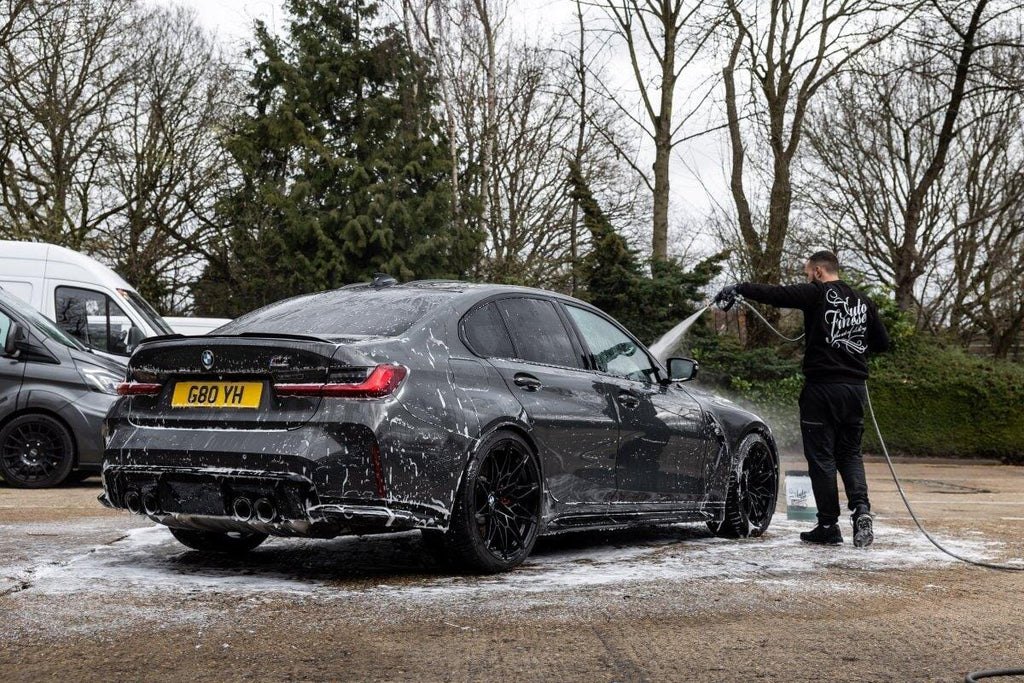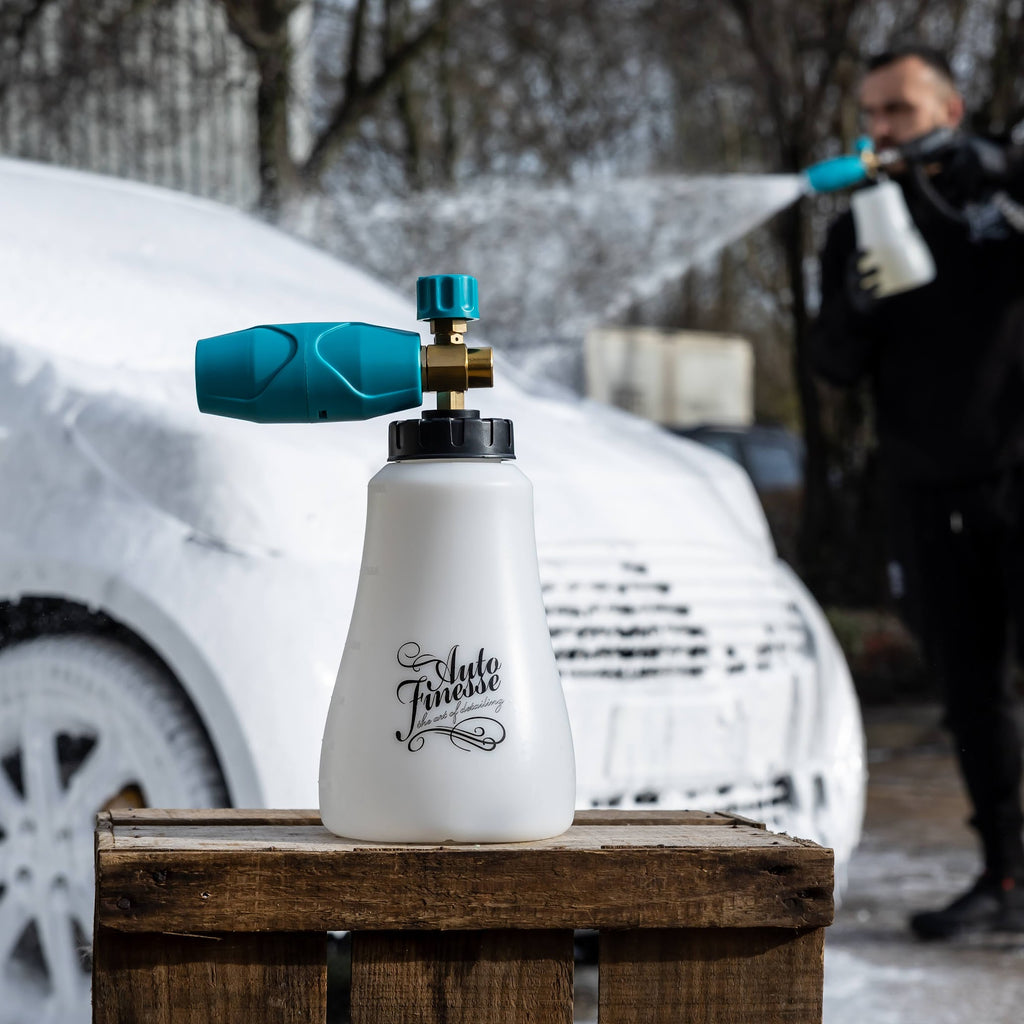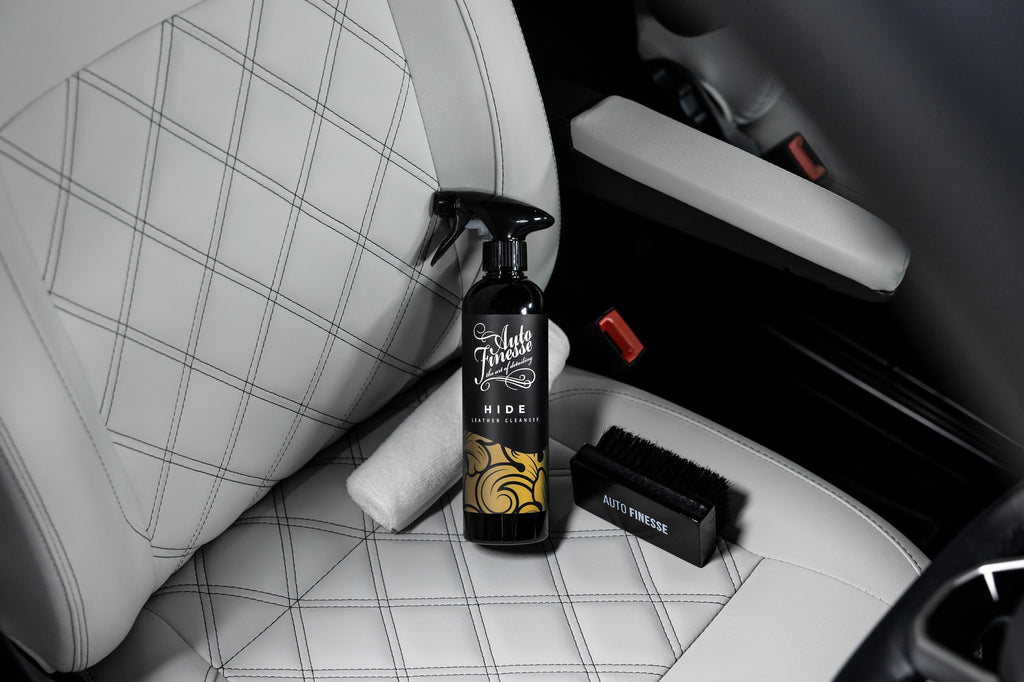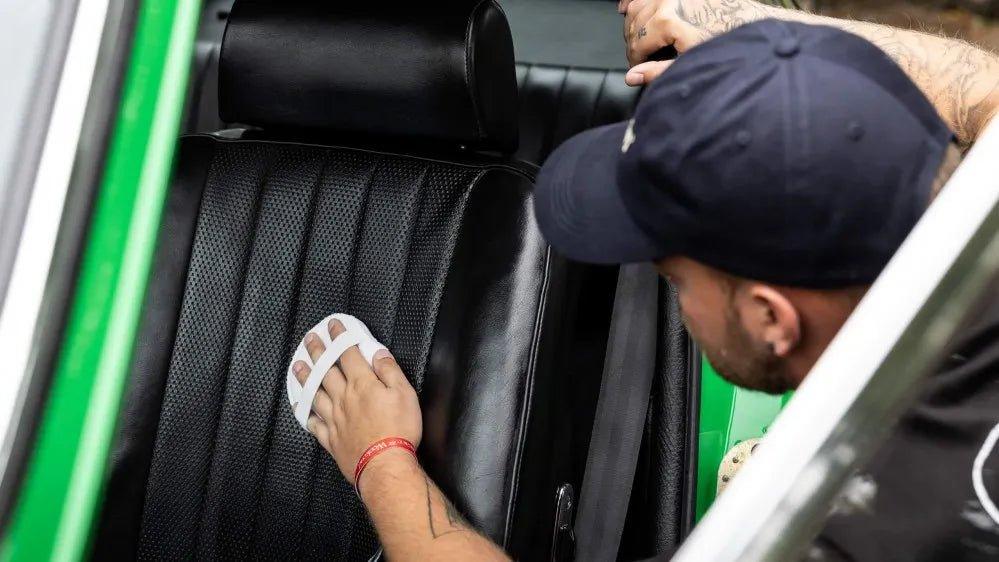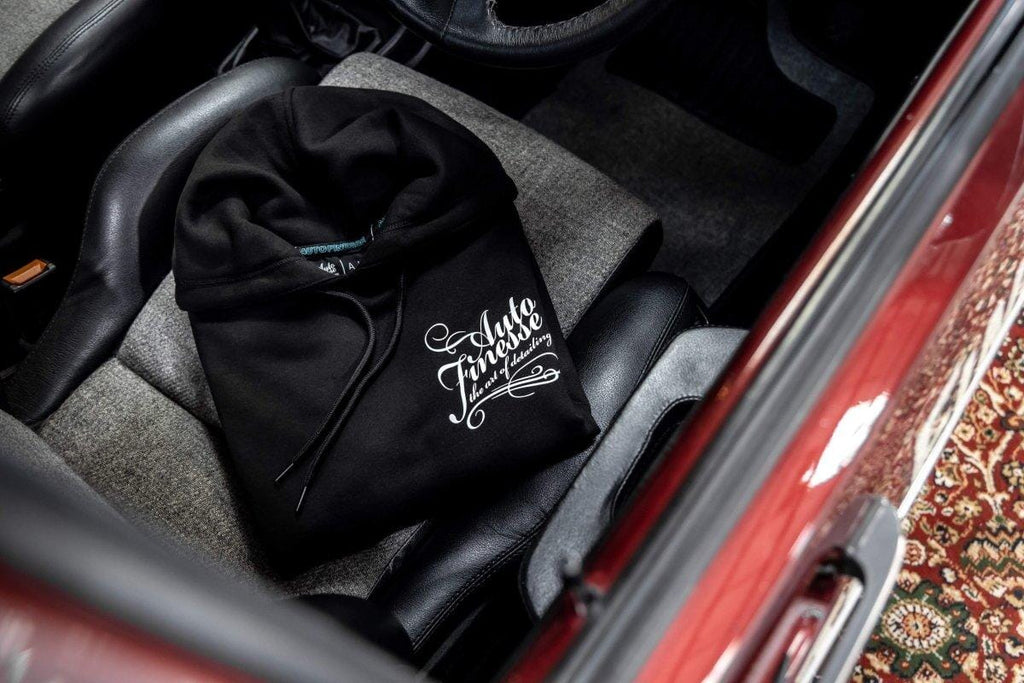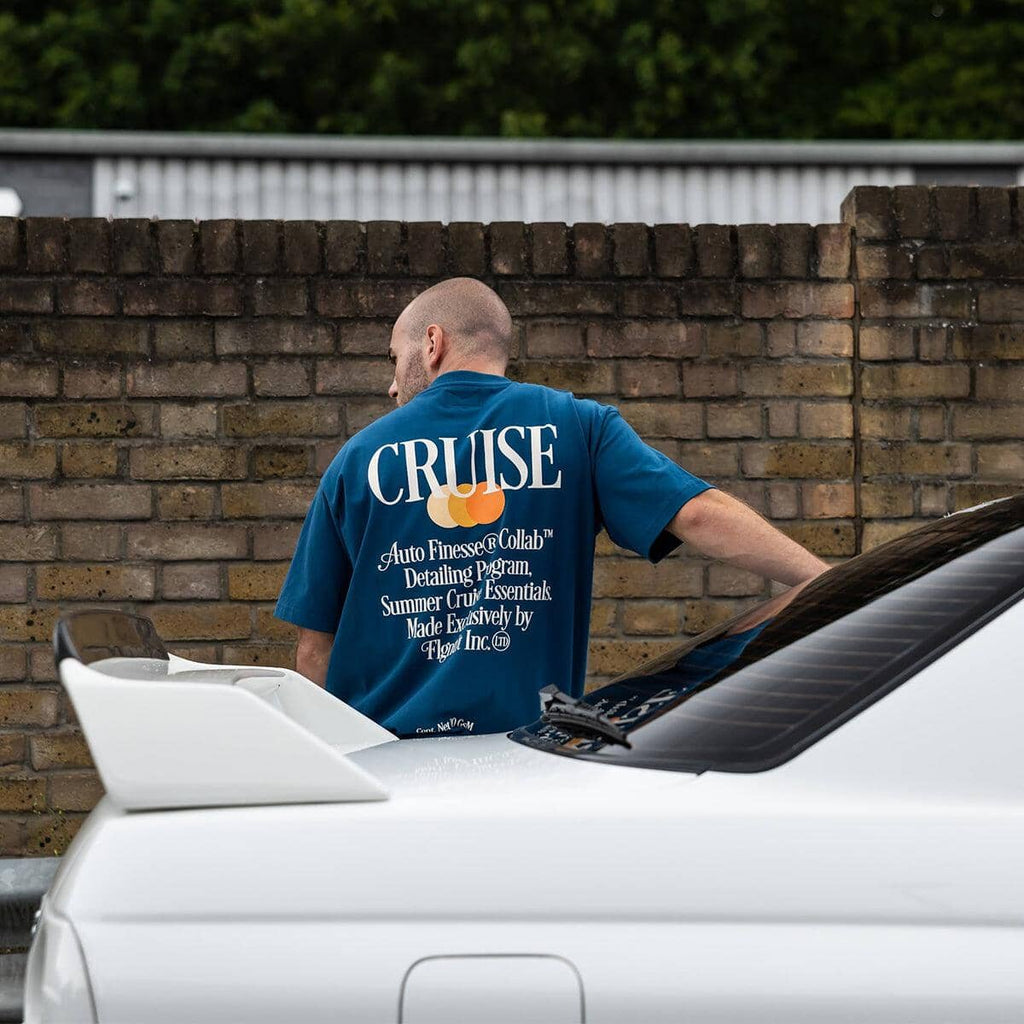Wet Sanding Explained Course

Welcome To The Wet Sanding Explained Course
The ultimate step-by-step guide for experienced detailers, the Wet Sanding Explained Course will see you through arguably the most advanced, and possibly most feared, detailing process.
Ideal for enthusiasts already well versed in the art of machine polishing, or trade professionals looking to expand their skills and services to their customers, this in-depth course covers intense paintwork correction using the correct Detailing Products, along with heavy abrasives, imparting the skills and knowledge to be able to rid clearcoat and single-stage top coat layers of the most unsightly defects.
We'll take you through the process from start to finish, not only showing you how to safely and efficiently eradicate blemishes such as orange peel, deep scratches and severe etching using a straightforward and safe wet sanding technique. But this comprehensive course also incorporates the final finishing processes to be carried out after sanding – showing you exactly how to refine your perfectly-levelled paintwork to a lustrous, unblemished shine (even under intense inspection with our Swirl Spotter Detailing Light) using a combination of professional products including our MPX Dual Action Machine Polisher and Microfibre Spot Pad.
Covering all gloss paint types from factory paintwork to aftermarket resprays, you’ll learn the basic fundamentals of the wet sanding process, including invaluable professional tips and tricks like how a simple bucket of water can take away the danger of heat build-up during extreme paint correction. Why sanding will level both the optical and physical finish of your clearcoat. How light reflection can deepen the gloss of your paintwork. What equipment you need, and the vast range of heavy defects that can be removed.
Of course, we’ll also help you answer the ultimate detailing question – should you wet sand your paintwork at all?
The Wet Sanding Explained Course focuses on getting professional results in situations which may appear impossible, cutting away the most obvious heavy paint defects, in the most efficient and effective way, using an advanced technique that will prove a valuable addition to your detailing arsenal.

The Wet Sanding Explained Course Includes:
Wet Sanding Introduction – Discover the science behind how the wet sanding process removes heavy scratches and defects, see the products required and learn when you should - and most importantly shouldn’t - wet sand your paintwork.
Measuring Paint Depths – It goes without saying that it’s vital to ensure that there’s enough clearcoat or topcoat to sand effectively without causing irreversible damage. Here’s how it’s done.
Wet Sanding Explained – See the video where our professional instructor covers the entire process from start to finish, including wet sanding and machine polishing to a flawless finish.

Wet sanding is perhaps the most daunting task in all of detailing, so let's take you through the science first, before showing you how the process is performed and offer advice on when you should - or more importantly shouldn't - attempt to remove the harshest paintwork blemishes using this procedure.

What is Wet Sanding?
Wet Sanding is the physical removal of texture or localised imperfections in the top layer of your paintwork to leave a smoother finish that reflects light better. This gives the appearance of a deeper, glossier surface.
The process, as with all paintwork correction procedures, doesn't remove defects directly, instead it removes a microscopic part of the top layer, levelling down the entire area until the bottom of the deepest defect is reached or surpassed. This is what makes the imperfection disappear and the idea is to leave behind a perfectly smooth, defect free, top surface.
Modern 2-stage paintwork consists of three layers. The first layer is primer, over this you have the base coat (which is the colour pigment layer) and then finally the clear coat, which is referred to as the lacquer - this is what protects your base coat. Generally speaking, the lacquer layer will be the thickest layer of your paintwork, and this is the part where you'll find the defects.
It may be obsolete nowadays, but you'll still find single-stage paintwork on some classic and modern classic vehicles. Single-stage paint consists of a primer layer with a pigment (topcoat) layer over the top. These do not use a separate clear coat layer for protection, so here the defects will be found in the paint layer.
Sanding or polishing your paintwork isn't the process of removing all of your clear coat (or topcoat) but is instead the process of removing a small amount off the surface in order to level the surface and restore that shine.
An uneven paint surface is easily identifiable because the light bouncing off it will be reflected in different directions. This is what makes defects in the surface noticeable to the eye - in a way it's not the actual defects you see, but the random nature of the light bouncing off them. By levelling out the surface, light will reflect back to the eye in a more uniform way, making the surface appear shinier, and giving the effect of deeper paintwork.
This is also why, during any correction procedure, we use a strong, consistent light source to help identify the smallest swirls and imperfections.


How Does An Uneven Paint Surface Occur?
There are many factors that can cause imperfections and result in an uneven paint surface. The most common defects you'll find are orange peel, swirl marks, deep marring, acid and water etching, scratches, and buffer marks from machine polishing (commonly referred to as holograms). Some - such as swirling and scratches - are caused by physical actions, that often could have been avoided, such as unsafe wash techniques. Others will be unavoidable and caused environmental conditions and some - particularly orange peel - may have been there from the factory or be brought on by other actions such as paint repairs.
Orange peel is one of the easiest defects to spot and arguably one of the most common to require wet sanding to remove. It can be found in some factory paintwork but is most often present when a panel has been resprayed. It's easy to see as it looks as if there are bumps in the paintwork, just like the textured surface of an orange.
When a body panel or vehicle is resprayed the mixture of solid paint and the solvent carrier that leaves the gun is wet. It lands on the surface and then goes on to dry as the solvents evaporate, leaving behind the solid paint. This process of evaporation is unavoidable and what leaves behind the texture, it's also the reason why body shops sand and compound paintwork after spraying, to make the effect less noticeable to the untrained eye.
With paintwork that suffers from orange peel or any other defect, such as a scratch or surface etching, if we look at a cross section of the top layer on a microscopic scale, you'd see that it isn't flat. Instead, it will contain high and low spots, almost like peaks and troughs. The purpose of wet sanding - along with subsequent polishing to further refine the surface - is to level the layer down until these no longer exist. Ultimately what we're aiming to achieve is a completely flat surface using progressively finer abrasives, working through several stages of wet sanding and machine polishing.
Do I Need To Wet Sand?
This is always the number one question that you need to consider before you attempt any wet sanding. In fact, there are arguably more reasons why you shouldn't, then why you should. It almost goes without saying that removing a layer of your paintwork, no matter how microscopic, comes with some risk and should always be handled with caution.
Wet sanding is a process which uses coarser abrasives than most polishes, and this opens you up to the potential of removing too much of the top layer and causing lasting damage to your paintwork by passing through to the next layer - either from the clear coat to the pigment layer, or the topcoat to the primer. The process is only designed to remove defects in the top layer, so if a deep scratch already passes through multiple layers, it cannot be removed.
There is of course the point that there needs to be enough of a top layer present to take away without removing it all. This is why, before we take any sanding blocks to the bodywork, it's vital to measure the depth of the paint. To avoid any damage, it's crucial that we know what we're working with. We'll show you how to measure paint depth in the next chapter.
We also need to ask some other vital questions:
- Has the panel been resprayed?
- Are we working with factory paint?
- What depth is the paintwork on the panel?
- Has the vehicle been machine polished or sanded before?
But most of all, you should always consider the implications of wet sanding before you start.
A few reasons why you should always be cautious include:
- You're abrading the top layer so it will offer less protection for the paintwork underneath going forward. Once you've sanded you will have a thinner layer of clear coat to protect your paintwork.
- A panel that has been wet sanded before cannot always be wet sanded again. This means that, if you then go on to incur scratches or imperfections in the clear coat or topcoat after sanding, they cannot always be fixed. There is only so of the top layer that can be removed before we reach the layer below.
- Removing part of your clear coat will also proportionally degrade its ability to shield the paintwork from UV fading. The thinner the layer of clear coat, the less protection there will be.
The above being said, when performed correctly, wet sanding can be a game changer for your paint finish, and in many cases it's the only way to remove major imperfections.

Essential Products and Accessories
Below you'll find a list of all the products and accessories used throughout this course. While this is by no means a complete list, these are the essentials that we recommend based on our experience…
Swirl Spotter - Detailing light offering a strong, direct light source needed for defect identification and inspection.
MPX Machine Polisher - Compact dual action machine polisher which includes a 3-inch backing plate.
Pro Mixing Bottle - Spray bottle, in this case used to mist water onto the surface for lubrication and reduction of heat during the sanding process.
Pro Polish Bottle - Ideal for getting the perfect spread of compound on your machine polishing pad.
Microfibre Work Cloths - General use 3GSM microfibre cloths for removing polishing residue.
Microfibre Spot Pad - 3-inch microfibre polishing pad used for heavy cutting after wet sanding.
Revitalise No 2 Spot Pad - Medium density foam machine polishing pad used for cutting and refining.
Detailing Bucket - Dedicated bucket purely for wet sanding used to soak and soften the sanding media.
Sanding Equipment - 2000 and 3000 grit glass paper and sanding blocks.

How To Measure Your Paint Depth
Before undertaking any kind of paintwork correction it's advisable to use a professional depth gauge to measure the depth of the paint from the top layer all the way down to the surface of the bodywork, be that metal, carbon fibre or plastic.
This simple device is held against the surface to give you an overall reading of the thickness of the paint, primer and lacquer layers.
In this instance the paint (in the specific area measured) is 154 microns.
The micron is typically the unit of measurement we use here in Europe, and one micron equates to 1000th of a millimeter. Some countries, particularly the US, measure paintwork in millimeters.
Regardless of the measurement used, we would expect a panel that's been resprayed to show a higher reading than that of a brand-new car, fresh off the production line.
Paint depth readings will also vary between vehicle manufacturers. Modern factory paint can typically be anywhere between 100-180 microns thick but, from experience, the average that we usually expect to see is usually around 130. We would expect approximately 50-80 microns of this to be the clear coat layer.
When taking readings of paint depths on a body panel it is always recommended that more than one reading is taken across the panel. This is because paint will vary in thickness on different panels, and over each panel itself. You may find thinner paint in some areas, and thicker paintwork others, depending on how the paint was applied, and the effect that gravity had how it spread around the panel, at the factory.
Taking multiple measurements over a whole vehicle, or the specific area to be corrected, allows us to build up a picture in our mind, essentially a map of the paintwork.

What Are We Looking For?
The simple answer is enough paintwork to sand and correct, without running into trouble along the way. Paint depths can vary depending on a number of factors, and these will cause a fluctuation in your readings. In some cases, the readings can reveal previous repairs that need to be avoided. For example, some repairs will blend paint (sometimes across multiple panels) to hide any hard edges where the original panel has been resprayed, uncovering these edges will cause a noticeable patch and should always be avoided.
If the panel has previously had a smaller localised smart repair, the location of the repair would show a significantly higher reading compared to the rest of the panel. You may also find that isolated areas of the vehicle may have had paintwork enhancements in the past, such as wet sanding or compounding. As such, we always measure as many points of each panel as possible to identify any high or low levels in the paintwork.
The idea is to tailor the wet sanding process to each and every panel. The lower levels of paint depth are extremely important to note as these areas are at higher risk of damage - the lower the overall reading the thinner the clear coat or topcoat layer will be. This increases the risk of breaking through the top layer and causing damage and, if this does happen, there's no going back. The body panel will need a smart repair or full respray to be corrected so it can be a costly mistake to make. For extremely thin - for example sub 100 micron - paint layers the risks involved may outweigh the potential results.
Top Tip: Although it is possible, we wouldn't be comfortable wet sanding any area reading 80 microns or less, because of the increased risk of burning through the top layer.

The Wet Sanding Process Explained
Now let us take you through the entire process from start to finish...

Next Steps...
Congratulations on completing the Wet Sanding Explained course!
Before you go, don't forget to have a peek at some extra resources that you can take advantage of right now to continue your learning. We have a whole selection of online resources in the Guides section of our blog.
We welcome your feedback and hope you've enjoyed the course. Don't forget to shout about your new skills and knowledge, and share your progress on Social Media, too!
If you have any questions after you go, please don't hesitate to send an email to support@autofinesse.com
